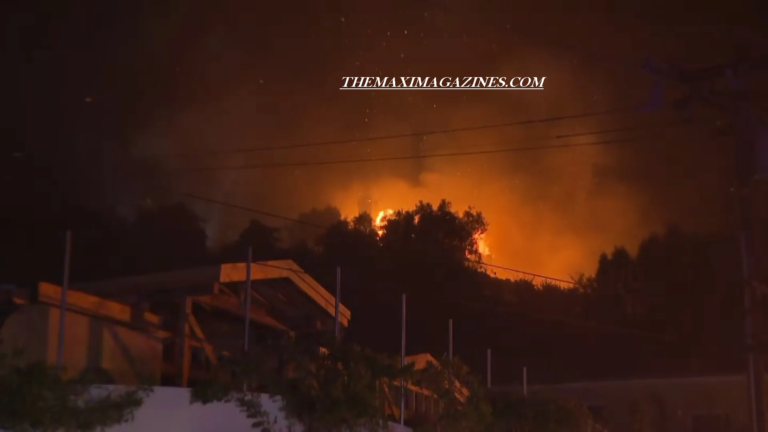Mountain fires, additionally known as wildfires or wooded area fires, are a natural and from time to time human-induced phenomenon that could result in devastating outcomes for ecosystems, human fitness, and infrastructure. These fires normally occur in regions with dense plant life, especially throughout dry seasons when the hazard of fire is excessive. In this text, we can explore the causes of mountain fires, their affects on the environment and communities, and important prevention strategies to mitigate the damage.
What is a Mountain Fire?
A mountain fireplace is an out of control blaze that spreads across mountainous and forested regions, consuming flowers and, in severe cases, threatening houses, flora and fauna, and human existence. These fires can occur due to natural reasons, like lightning moves, or thru human activities which include campfires left unattended, discarded cigarettes, or arson.

Natural Causes
Natural factors make contributions significantly to mountain fires. Lightning moves are a number one cause, especially in areas with little rainfall. Dry thunderstorms, in which lightning is accompanied with the aid of minimum precipitation, can spark fires. Other herbal factors encompass volcanic eruptions, that can ignite close by plants, and spontaneous combustion of dry, natural materials.
Human-Induced Causes
While herbal causes are responsible for some mountain fires, a huge percentage is induced with the aid of human sports. Campfires, fireworks, burning debris, and even sparks from equipment can ignite fires in dry areas. With improved human pastime in forests and mountainous areas, the danger of fires has risen, making it vital to exercise caution.
The Impact on Ecosystems
Mountain fires have a profound impact on ecosystems. The instant consequences consist of destruction of plant life, loss of wildlife habitats, and soil erosion. Some species are resilient and adapt to hearth-susceptible areas, while others face threats of extinction. Furthermore, the fireplace’s excessive heat can alter soil residences, making it difficult for vegetation to regenerate in the affected region.
Health and Economic Consequences
Mountain fires produce thick smoke full of pollutants like carbon monoxide and satisfactory particulate be counted. These pollution pose serious health dangers to people, specially those with respiratory situations. Economically, fires can cause giant belongings damage, disrupt nearby companies, and increase government spending on firefighting and restoration efforts.
The Role of Climate Change
Climate trade has exacerbated the frequency and depth of mountain fires. Warmer temperatures and extended drought durations make forests greater at risk of burning. Climate trade additionally affects climate patterns, developing situations that gasoline longer and more extreme fireplace seasons. This remarks loop highlights the need for urgent movement to deal with international warming.
Preventive Measures
Prevention performs a critical role in reducing the occurrence of mountain fires. Governments and environmental organizations advocate for managed burns, which involve setting small, controlled fires to clean dry plant life that may function gasoline for larger fires. Education on hearth protection, developing firebreaks, and implementing strict policies on campfires and debris burning also are powerful techniques.
The Importance of Firefighting Technology
Firefighting generation has evolved, permitting faster and more effective responses to mountain fires. Drones are used to display and map fires, whilst aerial water tankers help extinguish flames in hard-to-reach regions. Innovations like those help reduce the unfold of fire and guard firefighters and communities from chance.
Community Involvement in Fire Prevention
Community participation is crucial in stopping mountain fires. Local residents are encouraged to keep defensible space around their houses, eliminating dry leaves and plants. Community-led packages also train people on hearth protection practices, getting ready them for emergencies. Together, those efforts build resilience against ability fireplace outbreaks.

Restoring the Landscape After
After a mountain fireplace, healing efforts are vital to rehabilitate the affected landscape. Reforestation programs assist replant timber and repair biodiversity. Soil stabilization initiatives save you erosion, and water assets are purified to take away contaminants from ash and particles. These efforts support atmosphere healing and help communities circulate forward after a catastrophe.
FAQs
What are the primary causes of mountain fires?
Mountain fires are resulting from herbal factors like lightning and human activities such as unattended campfires, burning debris, and arson.
How does weather change have an impact on mountain fires?
Climate trade results in hotter temperatures, extended droughts, and shifts in climate patterns, all of which make a contribution to more frequent and intense mountain fires.
Can mountain fires be useful to the environment?
Yes, a few ecosystems benefit from herbal fires as they clear old plants, release nutrients into the soil, and encourage new boom. However, common or intense fires can be unfavourable.
What are controlled burns, and why are they essential?
Controlled burns are small, planned fires set deliberately to clear dry flora, which reduces the risk of large, out of control fires.
How can groups assist in preventing mountain fires?
Communities can lessen hearth dangers by creating defensible areas, participating in fireplace safety education, and staying knowledgeable about fire policies and preventive measures.


